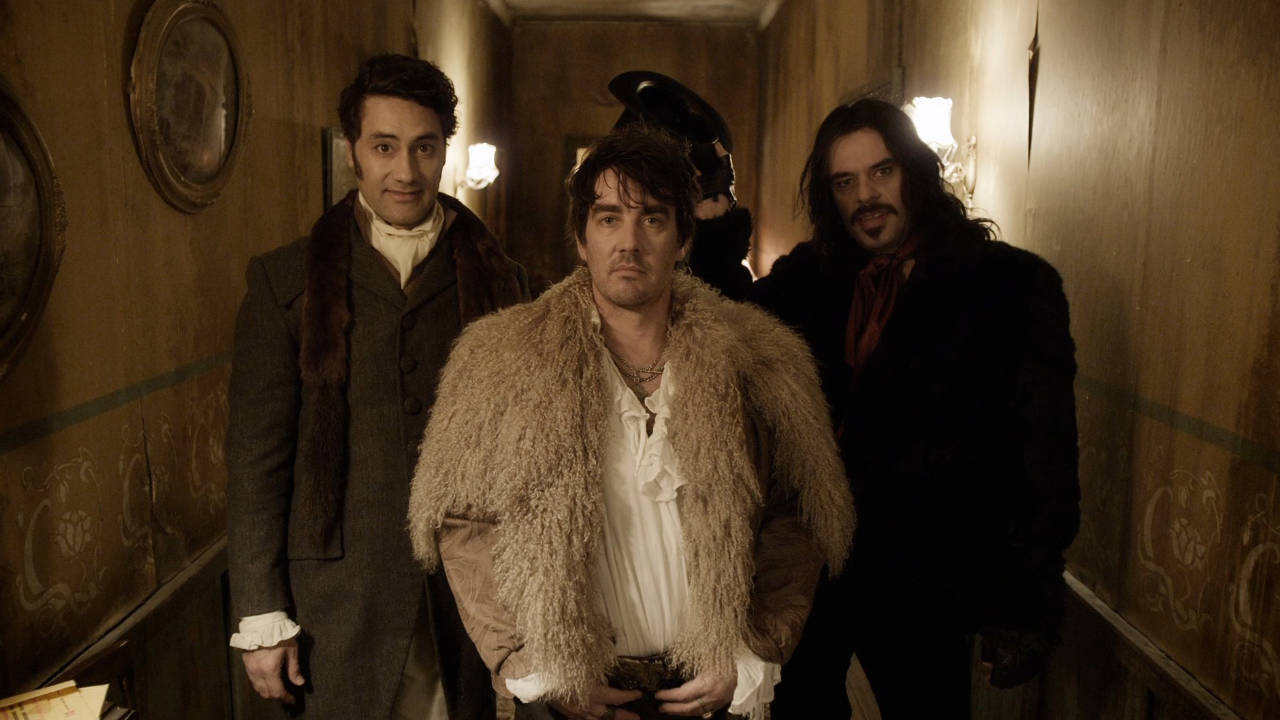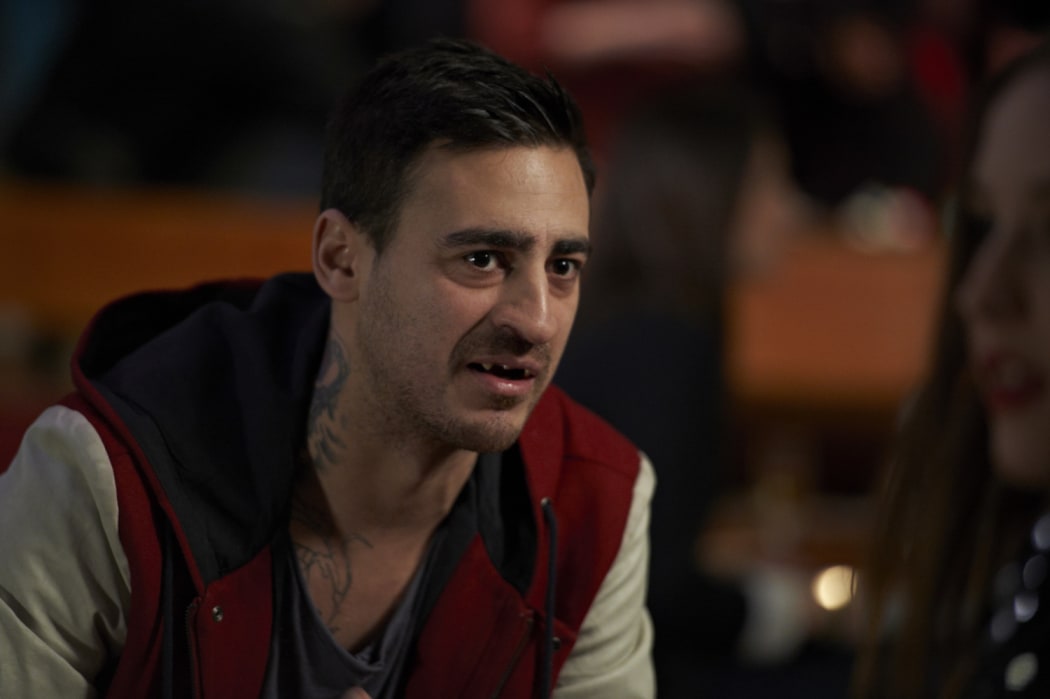Trans Allegories in Film: 'Nimona' (2023)
Animation as a medium of storytelling can be thought to be open to all ages and as I hope my reading will reveal, 'Nimona' could be interpreted as a transgender story.


Note: This article is about the film only.
Horror as a genre has a history of being heavily queer-coded. In fact, horror is one of those genres that loves us queers a lot. And one of the most popular examples is the vampire! Yes, the lesbian vampire is an age-old trope, dating back to the 30s (Vampyr) or rather the 60s (Blood and Roses). So when I finally sat down to watch Jemaine Clement and Taika Waititi’s What We Do in the Shadows, I had been hoping for queer undertones. It was made in 2014, so not exactly a time when queerness couldn’t be explicitly filmed and talked about. That’s a reason why 21st Century horror isn’t always queer-coded. It can be clear about the queerness of characters or can focus on other topics without having to be the go-to safe space for queers. Despite that, it delivered much more than I was hoping for, with heavy coding. There’s no subtext for queerness, so the events in the film can be read as cishet vampire shenanigans, but if you’re queer, you probably won’t do that.
What We Do in the Shadows is the story of four vampire flat-mates and their misadventures over some months. It’s made in a mockumentary format, with the premise that some human documentary filmmakers have been given permission to tail them with mic and camera during those months. Apparently, a major vampire event, the Unholy Masquerade is scheduled to happen soon and this documentary crew is allowed to document the actions of the group of vampires during the months leading up to it. It opens with Viago (Taika Waititi) climbing out of a coffin and checking carefully outside to ensure it’s night and safe for him to be outside. Then we get a little tour of the house as Viago goes around waking up his flat-mates for a house meeting. We’re first introduced to Deacon (Johnny Brugh) who has been sleeping upside down inside a literal closet (coding?). Then we meet Vladislav (Jemaine Clement) who seems to be busy with his own activities inside a lavish room. And finally, we find out that Petyr (Ben Fransham) sleeps inside a concrete slab-covered coffin down in the basement. He has a terrifying appearance and Viago is clearly intimidated, telling him the house meeting isn’t mandatory for him, unlike for Vlad or Deacon.

Each character in What We Do in the Shadows has an intricately designed back-story, narrated with a certain hilarity. Vlad is basically Vlad the Impaler. That’s a classic reference for those who’re unaware because Count Dracula is said to have been based on him. Here, he’s given the name of Vlad the Poker, the story being that Vladislav used to “poke” people as a part of torturing them. Viago moved to New Zealand, which is where the four are living now, in pursuit of a woman. However, due to a mistake on the part of his servant, he reached there rather late, and by then the woman had already fallen in love with and married another man. Deacon used to be a merchant before he was converted into a vampire by Petyr. He’s actually been a vampire for a much lesser time than the other three. As for Petyr, his appearance and silhouette in a particular scene seem to suggest he’s basically a reference to Dracula. His age would certainly insinuate he could be the first ever vampire to walk this earth. Following this group of misfits is a great deal of pleasure, especially if you read it in the queer-coded light.
The long-known lore about vampires is all acknowledged in What We Do in the Shadows. For example, the group has to dress up based on the feedback from each other, since their reflections don’t show up in mirrors. Viago has a locket from the woman he loves, but can’t wear it for long since it’s pure silver. He even demonstrates how it singes his skin. The trope that gives birth to comedy is that vampires can’t enter somewhere unless invited. So when they go out clubbing, you can see them hilariously trying to get the bouncer to actually invite them inside. The scariest of the tropes has to be the master-servant relationship. It’s where a human is persuaded by a vampire to do their bidding in exchange for a promise of being converted into a vampire themselves. This also involves hypnotism. And it’s from this that the plot advances. Viago convinces his servant Jackie (Jackie van Beek) to bring them some humans to feed on, and that’s how Nick (Cori Gonzalez-Macuer) enters their life.
After playing with Nick by hypnotizing him and scaring him, somehow they leave him the space to run before they get to draining him of his blood. And during the wild goose chase, Petyr gets a hold of Nick, drains him and then converts him into a vampire. Nick’s immediate reaction is one of ecstasy. He can finally fly like he has always wanted to! He becomes so ecstatic that he goes around telling everyone he’s a vampire. Most of the people he tells don’t believe him, and some of them do after he provides them with proof, scaring them in the process. His best friend Stu (Stu Rutherford) is a human and though Nick keeps him in the dark in the beginning, he eventually decides to tell him that he’s a vampire. Stu is initially scared but then accepts Nick for who he is and goes on to become friends with Viago, Deacon and Vlad as well. Even the terrifying and seemingly unwavering Petyr agrees to not feed on Stu or turn him into a vampire. So Stu ends up being close friends with all of them.

And this is where I decided I’m going to interpret What We Do in the Shadows entirely as a queer narrative, whether or not it’s intended to be so. I mean, Nick literally comes out to Stu and Stu accepts him. Also, Nick loves his life as a vampire more than as a human after Petyr turns him. It’s like the self-coming-out moment every queer person has experienced. You know, the one thing or the set of things which you experience that tells you you are queer? And then you feel like shouting from the rooftops that things finally make sense because you know you’re queer. Nick telling anyone and everyone that he’s a vampire is much like that. As for Stu? He’s literally the straight ally in the group. I mean, not literally, but he represents that part of the non-queer population that accepts queers, celebrates their queerness and is a pleasure to be around even if you’re queer. In fact, he is present even at the Masquerade at the end of the movie and the other vampires literally confront the group about how his presence isn’t okay and violates the only-vampires clause of entry. Even in the queer community, not everyone is accepting of straight allies, and understandably so because of the horrible experiences they’ve had because of straight people. So every event that involves Stu feels like a direct confirmation that What We Do in the Shadows is indeed queer-coded. Having a character as a euphemism for the straight ally is so important to me as a queer. That’s because the majority of the world has the potential to be an ally and Stu might become an example for those who are unsure how to be good allies. Jimmy Bunes talks about it in greater detail in his article about Twin Peaks.
Furthermore, there’s a subplot involving vampire hunters and this is awfully reminiscent of the queer-phobic public. In fact, the entire outside world design here feels like it’s out of the 80’s. Especially the club scene. And a way of interpreting turning into a vampire after being preyed on by them is how the homophobic world saw the spread of AIDS during the epidemic where they assumed homosexuals would infect them if they came in contact. You can see Vlad, Viago and Deacon roaming around, looking for a club and watching the people seated in the benches. They talk to themselves about who they are sure are vampires. It’s a haunting reminder of how queer people are persecuted and have to hide in broad daylight. Or rather, broad nightlight for our vampires. Finally, one of the bystanders even calls the three of them walking together “homos”. Are you still not convinced it’s queer-coded?
I’m not going to discuss every way What We Do in the Shadows is obviously talking about the queer experience. Firstly because I want you to discover them for yourself and secondly because I’m sure there are signs I missed which I’ll catch after watching more times. There’s enough evidence, however, to insinuate that What We Do in the Shadows is intentionally queer-coded. And the biggest piece of evidence as far as I’m concerned is the openly queer nature of the series which was sparked by the film. I’m yet to dive into it, but the film has got me sold on the style of storytelling and the queer undertone. Plus, the world-building is both authentic and intoxicating. Not only does it feel lived in and inviting, it’s also full of comedy! That is a refreshing take on queerness. No, you don’t have to be depressed and in a dark place if you’re a queer character. A dark place if you’re a vampire? Obviously. But not sad!
Related lists created by the same author
Animation as a medium of storytelling can be thought to be open to all ages and as I hope my reading will reveal, 'Nimona' could be interpreted as a transgender story.